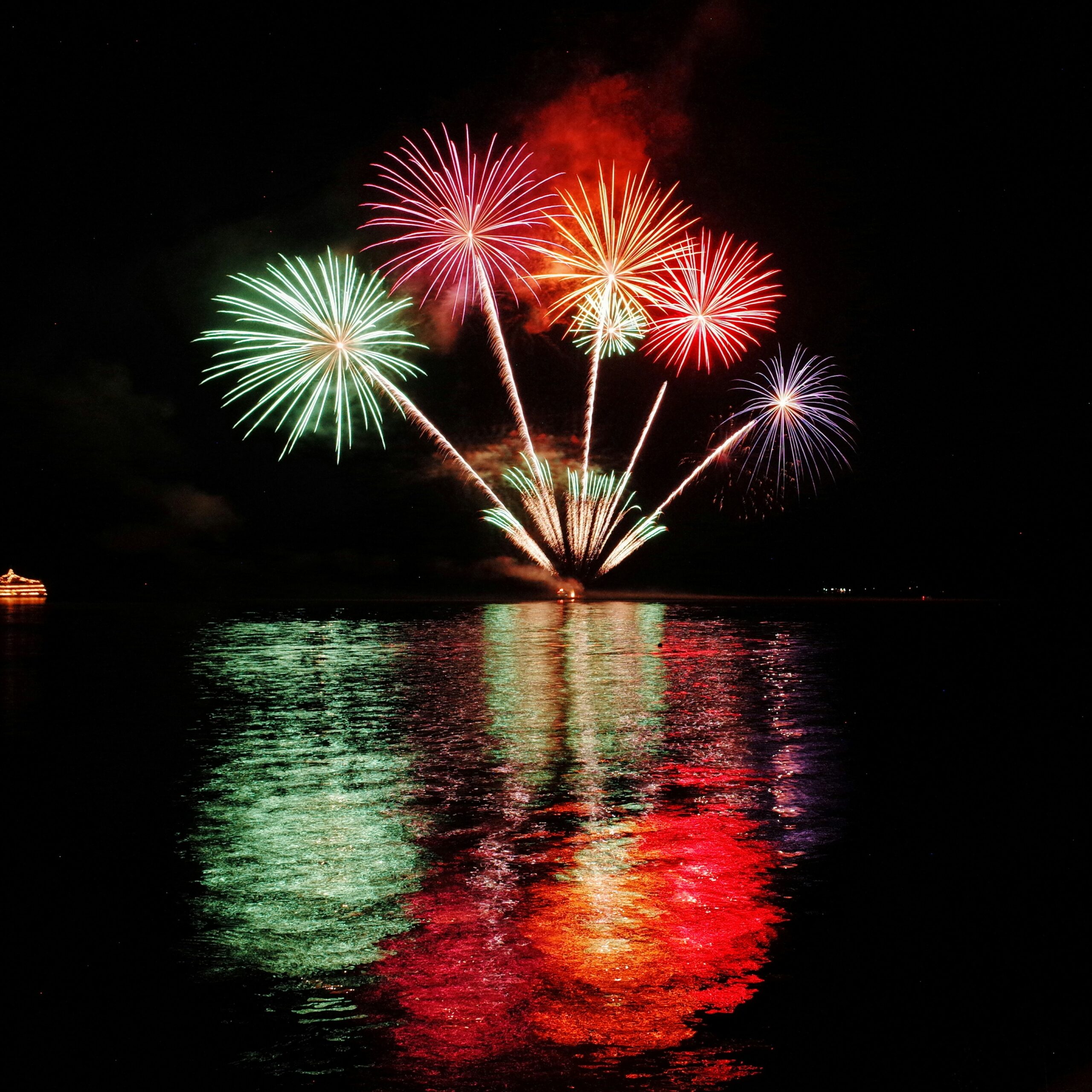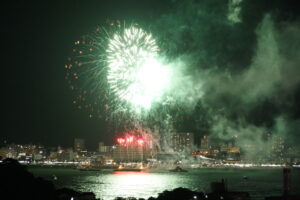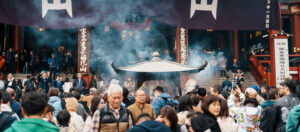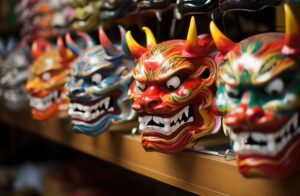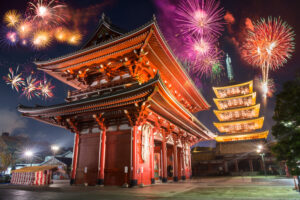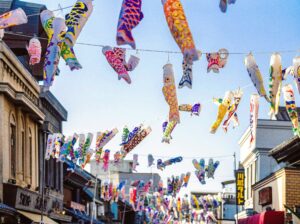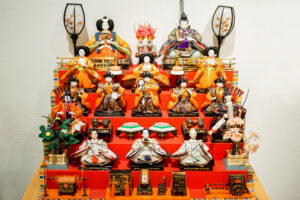In the heart of Japan, amidst its bustling cities and serene countryside, thrives an ancient pulse that has been beating for centuries – its festivals. These events, ranging from the snow-capped celebrations of Sapporo to the traditional dance rhythms of Tokushima, offer a unique window into the soul of this enigmatic country. Each festival, with its own history and charm, embodies the spirit, culture, and traditions of Japan, making them more than mere attractions; they are the living heartbeat of the nation. This article delves into the vibrant tapestry of Japanese festivals, exploring their significance, allure, and the stories they tell, providing an in-depth look at what makes these celebrations a profound expression of Japan’s identity.
Unveiling the Soul of Japan Through Festivals
Japanese festivals, known locally as ‘matsuri,’ are not just events; they are a vibrant expression of history and faith, uniting communities and generations. From the North’s icy sculptures to the South’s fiery dances, each festival encapsulates aspects of Japan’s spirituality, valor, and communal bonds. These gatherings, whether honoring deities, celebrating the seasons, or marking historical events, invite both locals and travelers to immerse themselves in an experience that transcends time. They serve as a mirror reflecting Japan’s complex relationship with nature, tradition, and the supernatural, offering insights into the values and beliefs that have shaped the nation. Festivals are where the past converses with the present, creating a lively atmosphere that resonates with the spirit of Japan.
The Timeless Allure of Kyoto’s Gion Matsuri
Dating back to the 9th century, the Gion Matsuri in Kyoto is a spectacle of ancient customs and grandeur, held annually in July. This month-long festival is highlighted by its majestic parade of floats, known as Yamaboko Junko, showcasing intricate craftsmanship and artistry. These towering structures, adorned with tapestries and wood carvings, are pulled through the streets by locals in traditional attire, reenacting a tradition that has been designated a UNESCO Intangible Cultural Heritage. The Gion Matsuri offers a glimpse into Kyoto’s aristocratic past, with rituals and events that engage the entire city, turning it into a living museum of Japanese culture. It’s a testament to the enduring appeal of traditional festivities in the modern age, inviting onlookers to step into a world where history breathes and dances in the streets.
Sapporo Snow Festival: A Winter Wonderland
The Sapporo Snow Festival transforms Hokkaido’s capital into a magical landscape of ice and snow every February. What began as a schoolboy’s snow statue exhibition in 1950 has evolved into an international spectacle, drawing millions to witness the enormous snow sculptures that line Odori Park and other sites. These sculptures, ranging from famous landmarks to popular characters, showcase both artistic creativity and technical prowess. The festival is not only a celebration of winter’s beauty but also a testament to community spirit and resilience against the cold. Illuminations cast a soft glow on the sculptures at night, creating a serene, otherworldly atmosphere. For one week, Sapporo becomes a canvas for snow artists from around the globe, proving that art, in its most ephemeral form, can bring warmth to the coldest of hearts.
The Wild and Vibrant Awa Odori Dance Festival
The Awa Odori Festival, taking place every August in Tokushima, is a riot of color, music, and dance, reputed to be Japan’s largest dance festival. Participants, dressed in traditional yukata and straw hats, chant and dance in a mesmerizing display that captivates both locals and visitors. The festival’s roots can be traced back to the 16th century, celebrating the Bon Festival in a uniquely vibrant manner. The phrase "Awa Odori" translates to "Awa Dance," and it’s a spectacle where the entire city becomes a stage, and everyone is invited to join the dance. The energy and joy of Awa Odori spread contagiously, embodying the spirit of unity and celebration, and illustrating the communal heartbeat of Japanese festivals.
Tanabata: Weaving Love Stories Across the Stars
Tanabata, or the Star Festival, held on the 7th day of the 7th month, is a celebration of a poignant legend about star-crossed lovers allowed to meet just once a year across the Milky Way. Streets and public spaces across Japan are adorned with vibrant streamers and bamboo branches, where people hang their wishes written on tanzaku papers. The festival, rooted in Chinese folklore, has been embraced fully in the Japanese cultural tapestry, symbolizing hope, romance, and the beauty of the night sky. In cities like Sendai and Hiratsuka, Tanabata is celebrated with grand parades, fireworks, and elaborate decorations, drawing crowds eager to partake in the festive atmosphere and perhaps, have their wishes granted by the stars.
Kanda Matsuri: Tokyo’s Dynamic Festival of Faith
Kanda Matsuri, one of Tokyo’s three great Shinto festivals, goes back centuries and is held in mid-May at Kanda Myojin Shrine, celebrating prosperity and good fortune. The festival features a lively procession of mikoshi (portable shrines) paraded through the streets of Tokyo, accompanied by musicians, dancers, and revelers in historical costumes. It’s a vibrant display of faith, tradition, and community spirit, reflecting the dynamic nature of Tokyo’s history and its people. Kanda Matsuri is not just a religious event; it’s a cultural spectacle, showcasing the unity of traditional and contemporary life in Japan’s bustling capital. The elaborate parade, offering a glimpse into the Edo period, brings together people from all walks of life, highlighting the inclusive and celebratory spirit of Japanese festivals.
Fire and Water: The Dynamic Nachi Fire Festival
The Nachi Fire Festival, held annually on July 14th at the Kumano Nachi Taisha Shrine in Wakayama, is a dramatic celebration of purification and renewal. Known for its towering torches, carried by priests in traditional garb, the festival is a tribute to the waterfall deity of Nachi Falls, Japan’s tallest. The juxtaposition of the roaring fire against the backdrop of the serene waterfall creates a mesmerizing spectacle, symbolizing the harmony between the elements. This festival, one of Japan’s oldest, embodies the Shinto reverence for nature, showcasing the enduring bond between the Japanese people and the natural world around them. It’s a powerful display of faith, tradition, and the elemental forces that shape our existence.
Lanterns in the Night: The Magic of Toro Nagashi
The Toro Nagashi, or lantern floating ceremony, is a poignant and beautiful event held in various parts of Japan, particularly during the Obon season in August. Participants inscribe paper lanterns with messages to deceased loved ones, then gently set them afloat on rivers, lakes, or the sea. The sight of countless luminous lanterns drifting on the water is spellbinding, creating a peaceful, reflective atmosphere. This tradition embodies the Japanese approach to grief and remembrance, blending beauty with melancholy. It’s a communal expression of sending off ancestors’ spirits back to the otherworld, illustrating the cyclical nature of life and death in Japanese culture. The Toro Nagashi is a moving experience, offering solace and a moment of collective mourning and celebration of life.
Behind the Masks: The Enigmatic Nebuta Festival
The Nebuta Festival, held annually in early August in Aomori, is one of the most colorful and dynamic festivals in Japan. Gigantic lantern floats, depicting gods, historical figures, and mythical creatures, illuminate the night, paraded through the streets to the rhythm of taiko drums and flutes. The energy is electric, with dancers called ‘haneto’ leaping and swirling in vibrant costumes, urging onlookers to join in. The origins of Nebuta are shrouded in mystery, adding to the festival’s allure. It’s believed to have evolved from the Neburi Nagashi, a ritual to dispel sleepiness and disease in the hot summer months. Today, it’s a dazzling spectacle of light, sound, and movement, showcasing the creativity and communal spirit of the Japanese people.
The Thunderous Drums of the Kodo Taiko Festival
The Kodo Taiko Festival, held on Sado Island, is a celebration of Japan’s drumming tradition, bringing together taiko groups from across the globe. For several days in August, the island reverberates with the powerful beats of taiko drums, in a testament to the instrument’s enduring appeal. The festival is more than a musical event; it’s a spiritual and physical showcase, demonstrating the strength, discipline, and passion of the drummers. Kodo, meaning ‘heartbeat,’ symbolizes the essential rhythm of life, and the festival itself becomes a pulsating force of nature, echoing the heartbeat of Japan. It’s a mesmerizing experience, highlighting the taiko drum’s role in Japanese culture as a tool for communication, celebration, and unity.
From Sacred to Spectacular: The Evolution of Japanese Festivals
The tapestry of Japanese festivals is woven with threads of history, spirituality, and community. These events have evolved from their religious origins to become grand spectacles, yet they retain their sacred essence, reflecting the soul of Japan. Festivals serve as a bridge between past and present, allowing for a momentary return to the roots, celebrating the cyclical nature of life. They are a vibrant expression of Japan’s cultural diversity, resilience, and creativity. As Japan continues to modernize, its festivals stand as a testament to the enduring strength of tradition, demonstrating that even in the face of change, the communal heart of Japan beats strongly through its celebrations.
Exploring Japan through its festivals offers a kaleidoscopic view of a nation that is steeped in tradition yet vibrantly modern. Each festival, with its unique blend of history, spirituality, and community, pulses with the energy and spirit of the Japanese people. From the snowy sculptures of Sapporo to the firelit nights of Nachi, these celebrations weave a rich narrative of a culture that values the past while embracing the present. They invite us, as participants or observers, to delve into the heartbeat of Japan, discovering not only the beauty of its festivals but also the enduring essence of its identity. As the lanterns float down rivers and the drums echo in the hills, it’s clear that the soul of Japan is alive and thriving, celebrated through the timeless rituals and festivities that mark the rhythm of Japanese life.
